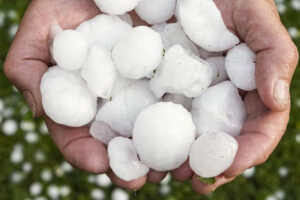 Yes, it is indeed possible to experience hail during various months in Texas. While hailstorms are most common in the spring months, Texas’s diverse climate means that hail can occur at different times throughout the year. Regions in Texas, particularly those in the Plains and parts of North Texas, may see hail events not just in spring, but sometimes in summer or even early fall. The frequent weather changes and storms can lead to unexpected hail occurrences, making it important for residents to stay prepared and informed year-round.
Yes, it is indeed possible to experience hail during various months in Texas. While hailstorms are most common in the spring months, Texas’s diverse climate means that hail can occur at different times throughout the year. Regions in Texas, particularly those in the Plains and parts of North Texas, may see hail events not just in spring, but sometimes in summer or even early fall. The frequent weather changes and storms can lead to unexpected hail occurrences, making it important for residents to stay prepared and informed year-round.
Hail damage can significantly impact the integrity of a roof. Here are some important facts to know:
Hail size matters: The size of hailstones can vary greatly, ranging from small pea-sized stones to large golf ball-sized or bigger. Larger hailstones typically cause more extensive damage.
Types of roofing materials react differently: Asphalt shingles can crack or get bruised, metal roofs may dent, and tiles might break or split. The extent of damage often depends on the roofing material used.
Timing is crucial: Hail damage often worsens over time. Even small dents or bruises can lead to leaks if not addressed promptly, as they can weaken the roofing material.
Visual indicators: After a hail storm, check for visible signs of damage, such as granule loss on shingles, dents in metal roofs, or broken tiles. These can indicate underlying issues that may need repair.
Insurance coverage: Many homeowners insurance policies cover hail damage, but it’s important to review your specific policy details. Keeping an updated inventory of your roof’s condition can assist when filing claims.
Regular inspections can help: Schedule roof inspections after severe weather to assess for potential damage. Being proactive can save you money in the long run by addressing issues early.
